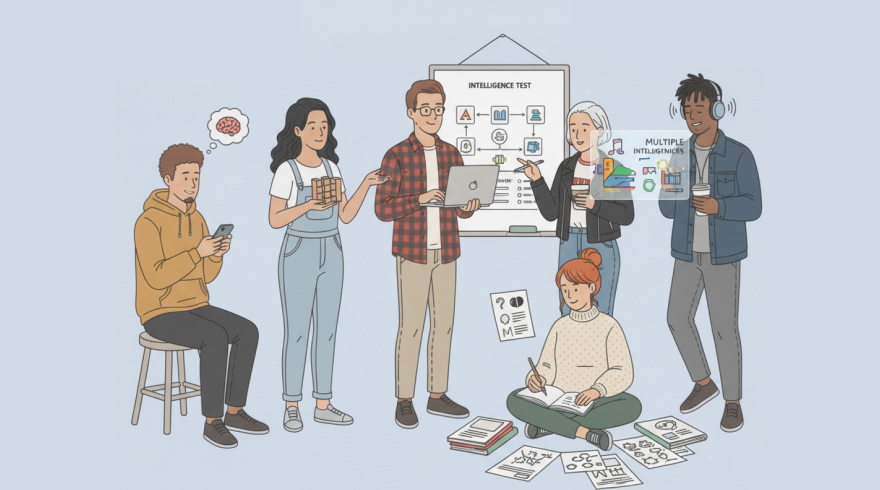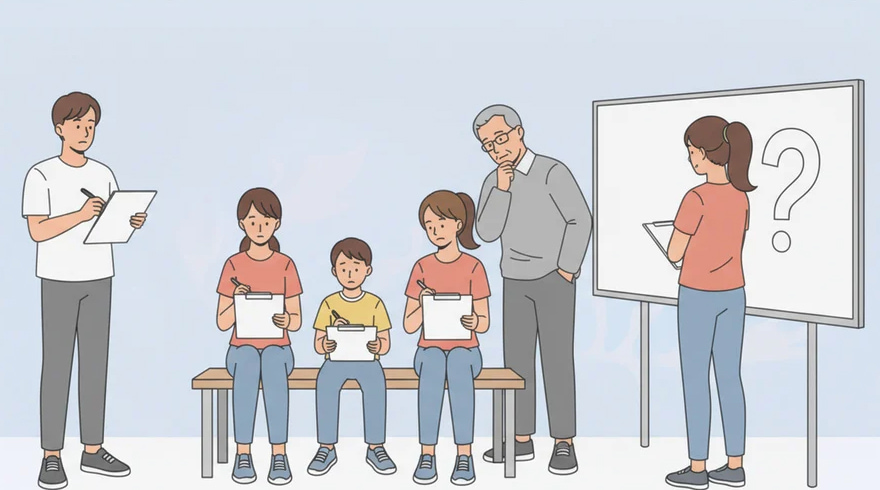Free Multiple Intelligence Testing: A Complete Guide to Smarter Learning Decisions
- 10 November 2025

Understanding Multiple Intelligences in Modern Learning
People learn in wonderfully different ways, and recognizing that diversity helps educators, students, and professionals make better choices. The multiple intelligences framework, introduced by Howard Gardner, broadens the definition of ability beyond academic scores. It highlights strengths like linguistic, spatial, musical, logical, interpersonal, intrapersonal, bodily-kinesthetic, and naturalistic capacities. When you examine these dimensions, you gain richer insight into how you absorb information, solve problems, and collaborate with others. That knowledge can transform study habits, team dynamics, and career exploration in meaningful, practical ways.
Instead of forcing every learner into a single mold, this approach encourages tailored strategies that use strengths as the gateway to mastery. Many readers start their journey by trying a free multiple intelligence test to kickstart self-reflection and gather a baseline for growth. The output is not a rigid label; it’s a springboard for smarter decisions about courses, tools, and environments.
Interpreting your profile works best when you combine results with real-world observations and feedback. Some people check benchmarks again later using a multiple intelligence test for free to see whether new study routines or projects have shifted their patterns over time. That blend of data and lived experience makes the insights far more actionable than a one-time score ever could.
- Use strengths to scaffold weaker areas without ignoring challenges.
- Align projects with natural talents to build momentum and confidence.
- Reflect on contexts where you perform best, such as hands-on labs or debates.
- Revisit findings periodically to track changes and refine strategy.
Benefits and Practical Uses of MI Insights
Organizations and classrooms benefit when instruction, tools, and feedback match how people naturally process information. Managers can design roles that fit communication and problem-solving preferences, while teachers can vary methods, diagrams, stories, simulations, to reach every learner. Individuals who understand their patterns often retain information better, feel more motivated, and choose resources that accelerate progress. The result is a more inclusive and effective learning culture that lifts outcomes without adding complexity.
Comparing models can also reveal complementary perspectives that round out your skill picture. Some learners explore sensory preferences through a VARK test for free to better understand how visual, auditory, reading/writing, and kinesthetic inputs affect comprehension. Others focus on strengths-based planning to decide which exercises are most likely to produce quick wins and lasting habits.
People who want quick feedback often use a free online learning style test to gather directional insights before diving deeper into a full talent map. Afterward, many pair findings with coaching or study groups to turn awareness into practical routines.
| Intelligence Area | Typical Strengths | Helpful Activities |
|---|---|---|
| Linguistic | Expressive writing, storytelling, vocabulary | Journaling, debates, summarization drills |
| Logical-Mathematical | Patterning, analysis, quantitative reasoning | Puzzles, data interpretation, coding challenges |
| Spatial | Mental imagery, design, visualization | Mind maps, sketching, diagram-based study |
| Bodily-Kinesthetic | Hands-on work, movement, tactile learning | Labs, role-play, physical models |
| Interpersonal | Empathy, collaboration, group facilitation | Peer teaching, workshops, team retrospectives |
| Intrapersonal | Self-reflection, goal setting, autonomy | Private study plans, reflective logs, coaching |
| Musical | Rhythm, tone, pattern in sound | Mnemonic beats, playlists for focus, cadence drills |
| Naturalistic | Observation, categorization, systems awareness | Field notes, case identification, environmental projects |
Different frameworks can be used together for richer clarity without overwhelming the process. Enthusiasts of experiential learning sometimes examine stages like Concrete Experience and Reflective Observation while also reviewing Kolb's learning style inventory test for free to cross-check preferences with actual performance. Blending models ensures that strategies are not only theoretically sound but also effective in daily routines.
- Map key tasks to the intelligence areas that support them best.
- Design learning sprints that match your strongest modalities.
- Pilot one change per week and measure retention or speed.
- Document results to build a personal playbook that evolves.
How to Take and Interpret Results with Confidence
Before starting, set a clear intention: Are you optimizing study habits, refining career choices, or improving team collaboration? Answering honestly matters more than chasing a desired profile, so give yourself time and avoid distractions. After the assessment, look for clusters rather than fixating on a single highest score. Then translate those clusters into specific, repeatable techniques that fit your daily environment and constraints.
It helps to validate your conclusions by experimenting with small changes, such as altering note-taking or switching practice methods. Learners who want to confirm broad preferences sometimes try a learning style test for free to compare insights with daily performance in varied tasks. In just a few days, patterns usually emerge that guide the next round of improvements.
When reviewing patterns, keep context in mind, preferences can shift with task type, energy level, and stakes. Some users revisit benchmarks quarterly using a multiple intelligences test free to see whether new routines or tools have strengthened weaker competencies meaningfully. Consistent iteration keeps your plan fresh and aligned with real outcomes.
- Summarize findings in a one-page profile you can refine over time.
- Pair each strength with one supportive tactic and one stretch tactic.
- Schedule periodic check-ins to assess progress and adjust methods.
- Share insights with mentors or teammates to gain practical feedback.
Comparing Frameworks: MI, VAK/VARK, and Kolb
Multiple intelligences focuses on broad talent domains, whereas sensory models emphasize how information enters your mind most effectively. VAK/VARK highlights input preferences, MI highlights capability clusters, and experiential models emphasize cycles of doing and reflecting. Combining them offers a multidimensional picture: what you’re good at, how you like information delivered, and how you convert practice into mastery. With this blend, you can design learning plans that are both motivating and efficient.
Some learners start with sensory preferences to tune environments and materials first, then layer in talent-based strategies. Those who want a quick sensory snapshot often try a free VAK test to calibrate how visuals, movement, or audio cues affect focus and retention. With that information, learners can immediately modify note styles, room set-ups, and practice routines.
After tuning inputs, many people consider broader skill domains to direct projects and roles. Individuals seeking a rapid overview sometimes explore a free learning style test to connect day-to-day study patterns with high-level strengths. The combination helps you decide whether to double down on storytelling, hands-on labs, or analytical drills.
Budget-conscious learners appreciate open resources that still deliver actionable insight for planning. Some users explore options labeled as a multiple intelligence test for free to gain clarity before investing in coaching or premium diagnostics. Once they see traction, they can selectively add tools that complement their profile.
- Use sensory insights to choose formats; use MI domains to choose strategies.
- Sequence changes: environment first, techniques second, stretch goals third.
- Cross-reference results with actual task performance and feedback.
- Keep experiments small, measurable, and time-bound for fast learning.
FAQ: Free Multiple Intelligence Test
How accurate are MI assessments for real-world decisions?
They provide directional guidance rather than final verdicts, so treat results as hypotheses to test. Most people get the best outcomes when they combine results with performance data across projects and classes, then iterate. Over a few cycles, the patterns that truly matter for your goals become clear and dependable.
How should I study after getting my results?
Start by aligning formats and techniques with your strongest areas, then gradually strengthen weaker ones with low-risk practice. Some learners pair their profile with a kolb learning style inventory test free to plan activities that move through experience, reflection, conceptualization, and experimentation. That rhythm turns insights into sustainable habits.
Can I use MI for team development and hiring?
Yes, as a conversation starter and development aid rather than a gatekeeping tool. Team leads can map project phases to complementary strengths, then rotate responsibilities to broaden capacity. Over time, retrospectives reveal which mixes of roles, resources, and formats produce the most consistent, high-quality outcomes.
How often should I retake an assessment?
Retest when something meaningful changes, new role, major project, or significant skill-building effort. A quarterly or semester cadence works well for most people, because it balances stability with responsiveness. Regular reviews help you spot subtle shifts and keep your learning toolkit current.
Where can beginners get started without spending money?
Begin with a short assessment and a small experiment like changing note-taking, practice intervals, or collaboration style. Some newcomers check a free kolb learning style test after a few weeks to compare real-world patterns with preferred learning cycles. That low-cost loop builds confidence while keeping progress measurable.
Latest News
-
![The Definitive Guide to MI Assessments for Personalized Learning and Growth]() The Definitive Guide to MI Assessments for Personalized Learning and Growth Find Your Learning Style With Test Get Started Understanding the Framework Behind MI Assessments Howard Gardner’s perspective on human capability reframed how educators, coaches, and employers think about talent. Instead of assuming a single, uniform score captures a...
The Definitive Guide to MI Assessments for Personalized Learning and Growth Find Your Learning Style With Test Get Started Understanding the Framework Behind MI Assessments Howard Gardner’s perspective on human capability reframed how educators, coaches, and employers think about talent. Instead of assuming a single, uniform score captures a... - 11 November, 2025
-
![Kolb’s Experiential Learning: A Complete Guide to Styles, Tools, and Benefits]() Kolb’s Experiential Learning: A Complete Guide to Styles, Tools, and Benefits Find Your Learning Style With Test Get Started Foundations of Experiential Learning and Why Styles Matter Experiential learning explains how people transform experience into knowledge by cycling through doing, reflecting, conceptualizing, and experimenting. Rooted in cogni...
Kolb’s Experiential Learning: A Complete Guide to Styles, Tools, and Benefits Find Your Learning Style With Test Get Started Foundations of Experiential Learning and Why Styles Matter Experiential learning explains how people transform experience into knowledge by cycling through doing, reflecting, conceptualizing, and experimenting. Rooted in cogni... - 7 November, 2025
-
![The Complete Guide to Mapping Your Intelligence and Learning Profile]() The Complete Guide to Mapping Your Intelligence and Learning Profile Find Your Learning Style With Test Get Started What Intelligence Profiling Really Measures Human capability is multidimensional, spanning reasoning, creativity, memory, attention, social acuity, and practical problem solving. Any credible assessment seeks to illuminate how...
The Complete Guide to Mapping Your Intelligence and Learning Profile Find Your Learning Style With Test Get Started What Intelligence Profiling Really Measures Human capability is multidimensional, spanning reasoning, creativity, memory, attention, social acuity, and practical problem solving. Any credible assessment seeks to illuminate how... - 6 November, 2025



